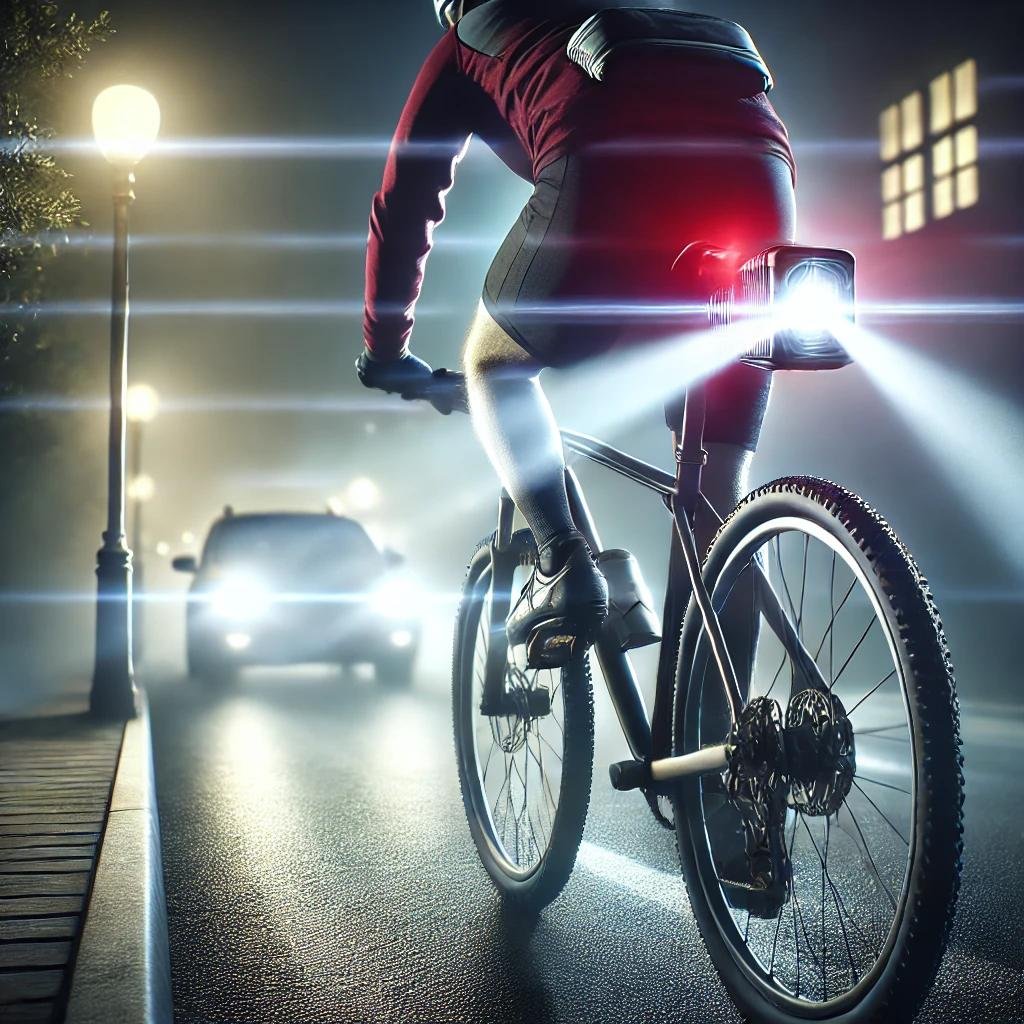An Introduction
Whether riding at night, on the road, or on a trail, any cyclist depends on bike lights. Excellent bike lights guarantee visibility, improve safety, and help make cycling more enjoyable. But given the abundance of choices, choosing the right bike lights can be challenging.
This all-inclusive guide will cover several kinds of bike lights, important considerations, top choices available, and essential safety advice.
Why Are Bike Lights Essential?
1. Safety and Visibility
- Increases visibility to other drivers.
- Enhances safety by preventing accidents in low-light conditions.
2. Legal Prerequisites
- Many countries and jurisdictions require front and rear bike lights for nighttime riding.
- Ignoring these laws may result in fines and penalties.
3. Improved Riding Experience
- Better illumination makes evening rides more comfortable and enjoyable.
- Helps cyclists navigate obstacles in poorly lit environments.
Types of Bike Lighting
1. Front Bike Lights
✔ Mounted on the handlebar to light the road ahead.
✔ Available in various brightness levels (measured in lumens).
✔ Can be battery-powered or rechargeable.
2. Rear Bike Lights
✔ Usually red-colored, mounted on the rear frame or seat post.
✔ Designed to increase visibility for other road users.
3. Helmet-Mounted Lighting
✔ Directs light where the cyclist looks, enhancing visibility.
✔ Often used together with handlebar-mounted lights.
4. Wheel and Frame Lights
✔ Increases side visibility for the bike.
✔ Often used for extra safety and decorative purposes.
5. Rechargeable vs. Battery-Powered Lights
✔ Rechargeable lights – USB-charged, eco-friendly, and long-lasting.
✔ Battery-powered lights – Ideal for long rides where recharging isn’t an option.
Important Considerations Regarding Purchase of Bike Lights
1. Lumens – Brightness
✔ 100–300 lumens – Urban commuting.
✔ 600–1000 lumens – Rural or trail riding.
✔ 1000+ lumens – Extreme conditions.
2. Beam Pattern
✔ Wide beams – Ideal for city cycling, ensuring visibility from different angles.
✔ Narrow beams – Long-distance illumination for dark roads or trails.
3. Battery Life
✔ Look for long-lasting battery life to minimize recharging frequency.
✔ Choose models with multiple brightness modes to extend battery efficiency.
4. Mounting Mechanism
✔ Should be secure and adaptable to different handlebars and seat posts.
✔ Quick-release mounts offer easy removal when not in use.
5. Durability & Waterproofing
✔ Ensure bike lights have a waterproof rating, such as IPX4 or higher.
✔ Must have a sturdy construction to withstand vibrations and rough terrain.
6. Flashing Modes & Light Settings
✔ Steady beam – Ideal for well-lit areas.
✔ Flashing mode – Increases visibility, especially in traffic.
✔ High or low beam settings should be adjusted depending on the environment.
Top Bike Lights Available Right Now
1. Cygolite Metro Pro 1100 – Best for Urban Commuters
✔ 1100 lumens for excellent visibility.
✔ Multiple brightness levels for different conditions.
✔ Rechargeable with long battery life.
2. Garmin Varia RTL515 – Best Rear Light
✔ Radar detection alerts cyclists about approaching vehicles.
✔ Bright red flashing light increases visibility from a distance.
✔ USB rechargeable with extended battery life.
3. NiteRider Lumina 1200 Boost – Best for Off-Roading
✔ 1200 lumens – Ideal for trail and country road cycling.
✔ Durable, waterproof design.
✔ Quick-release mounting mechanism.
4. Ascher USB Rechargeable Bike Light Set – Best Budget Option
✔ Affordable but bright and effective.
✔ Includes both front and rear lights.
✔ USB rechargeable with multiple flashing modes.
5. Lezyne Strip Drive Pro – Best for Side Visibility
✔ Side-facing LEDs for increased visibility.
✔ Multiple flashing modes.
✔ Compact and easy to mount.
How to Install and Maintain Bike Lights?
1. Installation Tips
✔ Ensure the front light points downward to illuminate the road without blinding others.
✔ Mount rear lights on the seat post or rear frame for optimal visibility.
✔ Consider using multiple light sources – front, rear, and helmet-mounted lights.
2. Maintenance Tips
✔ Check battery levels regularly and recharge when necessary.
✔ Clean light lenses to remove dirt and debris for maximum brightness.
✔ Ensure mounts are secure to prevent lights from falling during rides.
Commonly Asked Questions (FAQs)
READ ABOUT-The Ultimate Guide to Battery Operated Lights: Uses, Benefits & Best Picks
1. How many lumens do I need for bike lights?
✔ 100–300 lumens – Urban cycling.
✔ 600–1000 lumens – Trail riding.
✔ 1000+ lumens – Extreme conditions or high-speed downhill riding.
2. Are flashing bike lights better than constant lighting?
✔ Flashing lights improve visibility in traffic.
✔ A constant beam is needed to illuminate the road ahead.
3. How long do bike light batteries last?
✔ Battery life varies depending on brightness settings and model.
✔ High mode: Around 2 hours.
✔ Low or flashing mode: Up to 20+ hours.
4. Should I use bike lights during the day?
✔ Yes! Daytime Running Lights (DRLs) help increase visibility and reduce accident risks.
5. Are bike lights required by law?
✔ Many regions require:
- Front white light.
- Rear red light for nighttime cycling.
✔ Check local regulations for specific requirements.
In Summary
Bike lights are essential for any rider as they provide visibility, convenience, and safety. Choosing the right bike lights ensures a safe and enjoyable ride, whether you:
✔ Commute in the city
✔ Ride dark trails
✔ Want extra visibility during the day

